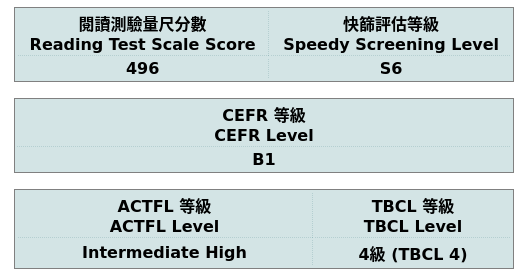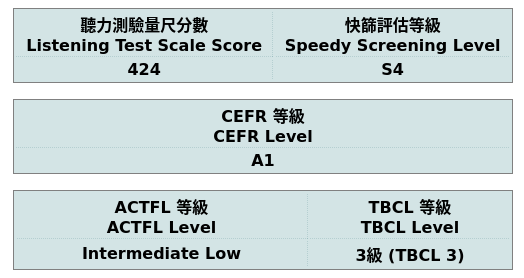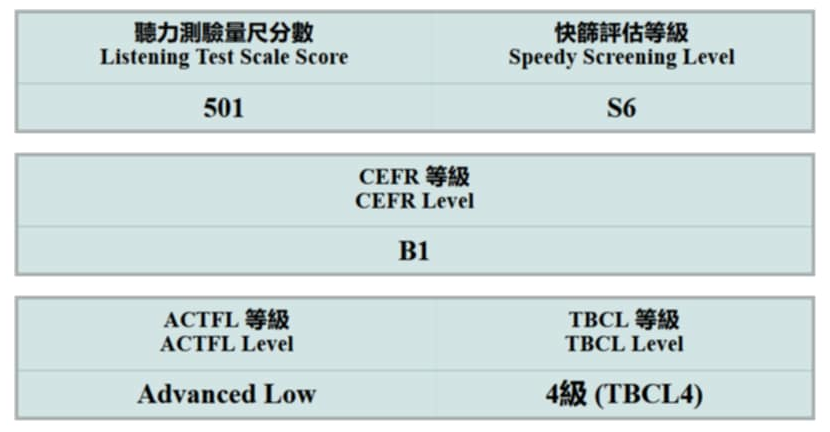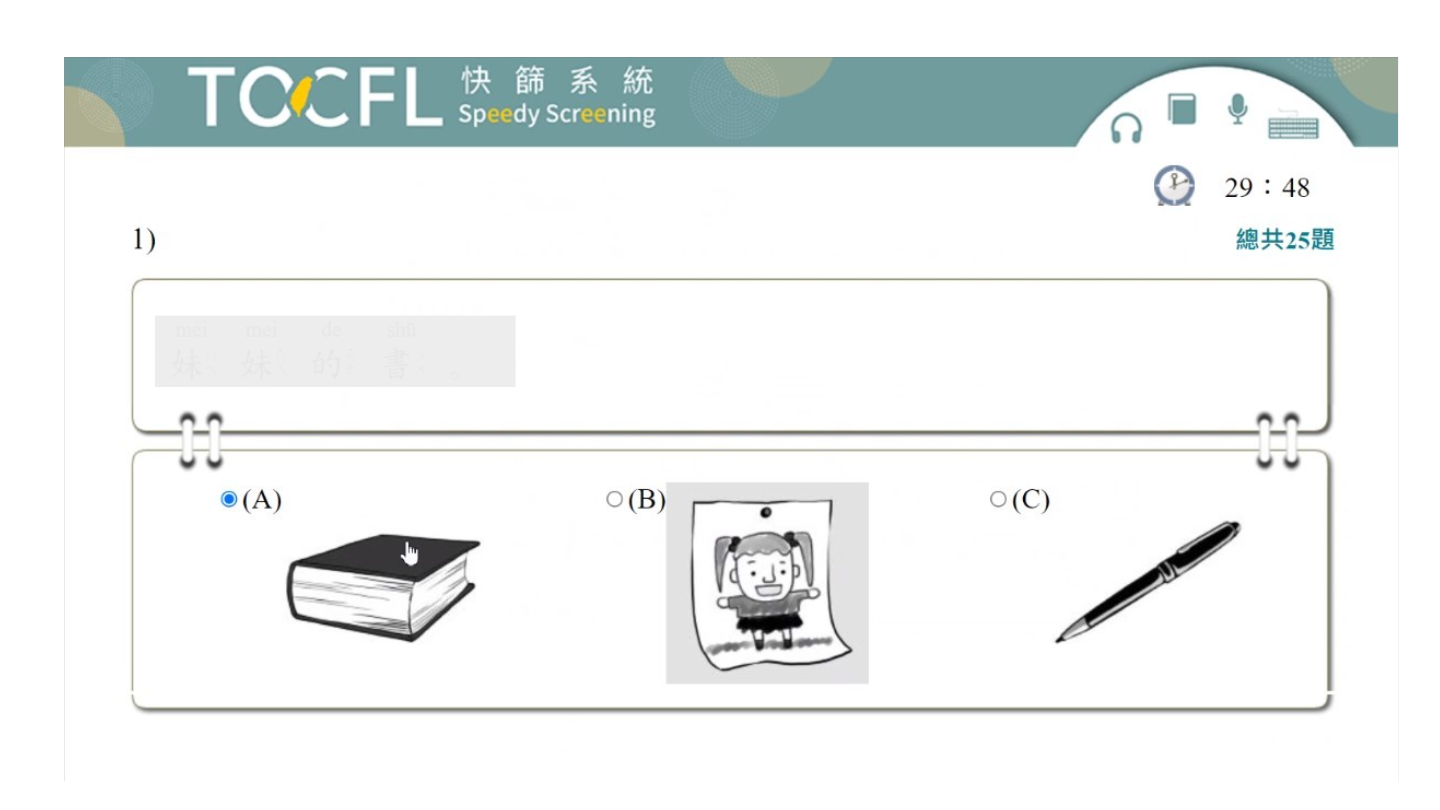As I will be starting class at Wenzao in a couple of weeks I was prompted to do a placement test using the TOCFL Speedy Screening testing system. The Speedy Screening test is a shortened TOCFL-like test that tests your listening and reading ability with 25 questions on each part. It takes approximately 1 hour to finish. Similar to the TOCFL, the Speedy Screening test is a CAT-test (Computerized Adaptive Testing) which means it adjusts the questions and the difficulty in the upcoming questions depending on your previous answers. The whole test is multiple-choice.
To be honest I’m personally really bad at these tests when there is some amount of external pressure put on me. While a placement test in this vein is one of the least intrusive ways of testing a student’s language ability in order to place them in a correct class, it was still a stressful moment for me. Even though I’ve done parts of a mock TOCFL CAT-test before, I was not really certain how the test would pan out in practice.
For the listening part, the test had a mix of simple dialogues and statements as well as longer dialogues and narratives. For the longer dialogues and the narratives, the recording was only played once and at the end you’re given approximately 5 seconds to find a suitable answer. The test automatically moves you on after the allotted time. While I felt comfortable with most of the shorter dialogues, statements and even some narrative, the longer narratives at native speed was a bit too much for me. Even though I sometimes felt like I knew the majority of the words being said, I couldn’t always string them together and understand the full context.
For the reading part, you are given 30 minutes in full to distribute as you wish. As you don’t really know the upcoming questions, this can be a bit stressful and the risk is that you spend too much time on the first few questions and at the end find you’re missing enough time to read the longer passages. The reading part was a combination of dialogues, shorter everyday texts, academic texts, pictures of signage and so forth.
Wenzao said to not prepare anything before the test, and that review wasn’t necessary.
In the end, you get to to immediately see your results. The results are divided into 5 different scales. First off is the reading test scale score, second is the speedy screening level which is S1-S10, the CEFR level, ACTFL level as well as the TBCL level.
My result for the reading part was the following:

In general I was quite happy with the test score for the reading part, and I feel comfortable that I'm around this level.
My result for the listening was the following:

I was taken off guard by this. While I realize my listening isn't fully up to speed, I was surprised to see the CEFR level being mapped to A1 for my listening. Both the ACTFL level and the TBCL level would correspond to being closer to A2 according to the chart here. Either way, I feel like even A2 didn't really correspond to the level I see myself at. While I'm careful of placing my language abilities too high, I'm capable of following podcasts like Talk Taiwanese Mandarin with Abby and Learn Taiwanese Mandarin. The first podcast mentioned is a bit tougher, but I'm getting a lot more comfortable with it. I have no issues conversing with my Chinese or Taiwanese friends and understanding what they're saying either, as long as they use familiar vocabulary. Even if the conversations I have with natives are being spoken a bit slower, or things are being repeated, I feel like A1/A2 is too low of a level.
Feeling a bit discouraged, not just at the prospect of landing in a class that doesn't suit my level, led me to on the second day trying a mock speedy screening test of the same sort, with different questions. This led me to improve my result quite remarkably. My CEFR level went from A1 to B2, and my ACTFL level from Intermediate Low to Advanced Low which makes this an even better result than what I received on the reading test.

As with the first test, when I couldn't understand the question at all, I didn't even wager a guess, just so that the scoring would be somewhat fair. There were some questions though that I didn't managed to comprehend the whole sentence, but still enough to make me want to take a guess.
Either way, I guess the reason for the discrepancy is that the pressure from the first real "test" was gone, that I was used to the format, and that I might have had questions that suited me better on the second test. In the end I shouldn't focus too much on this as this was just a short placement test. I'll see how it goes the first week of class.
